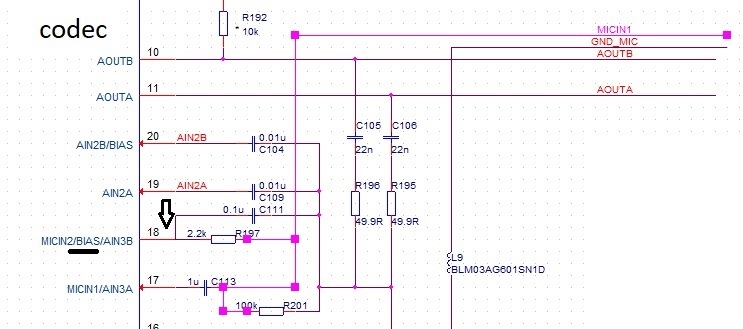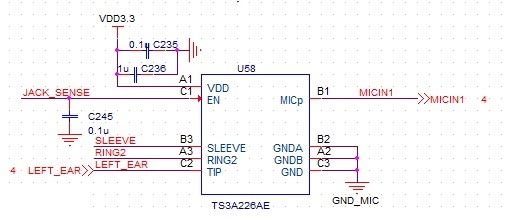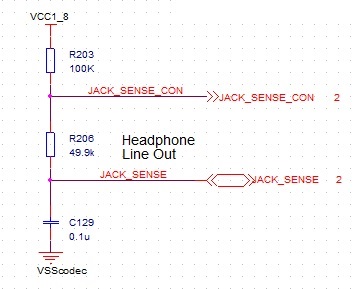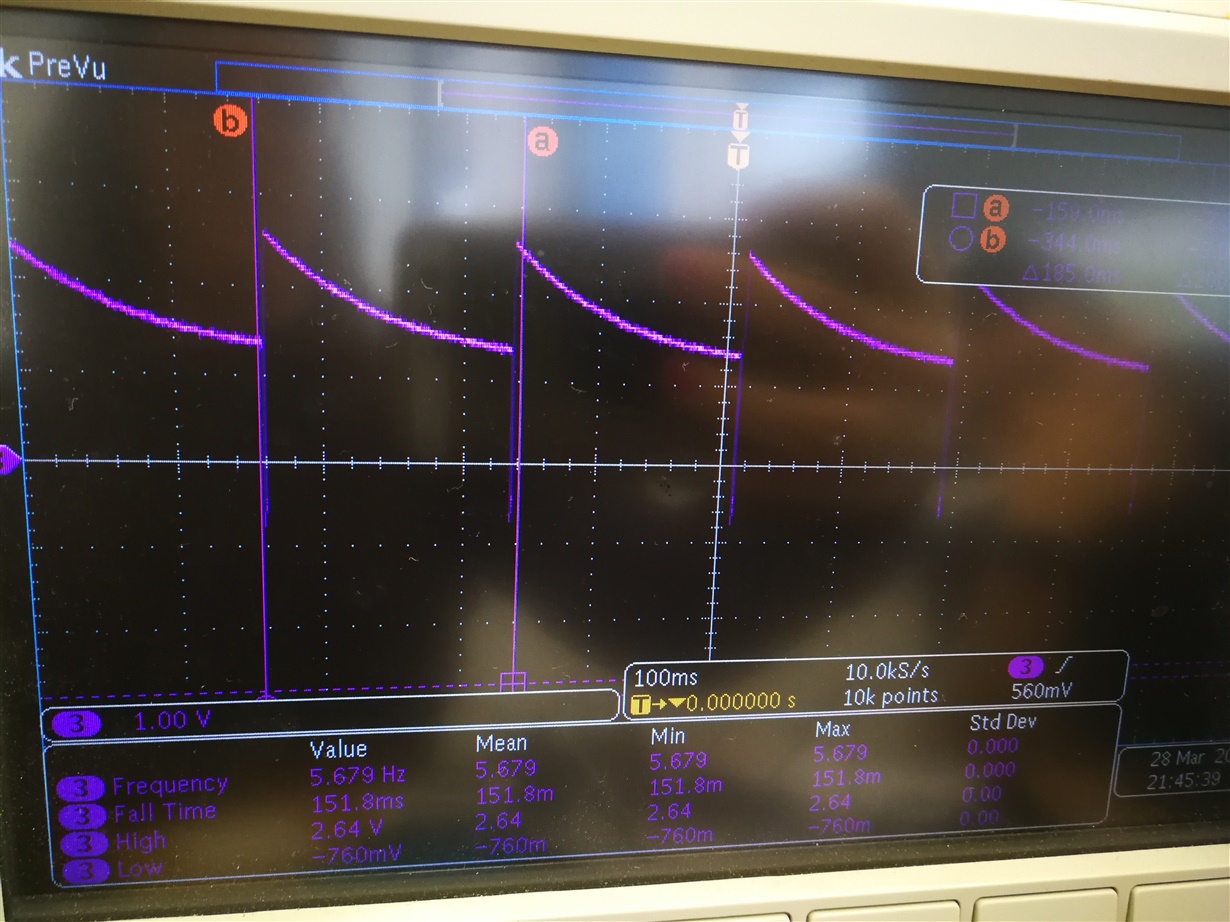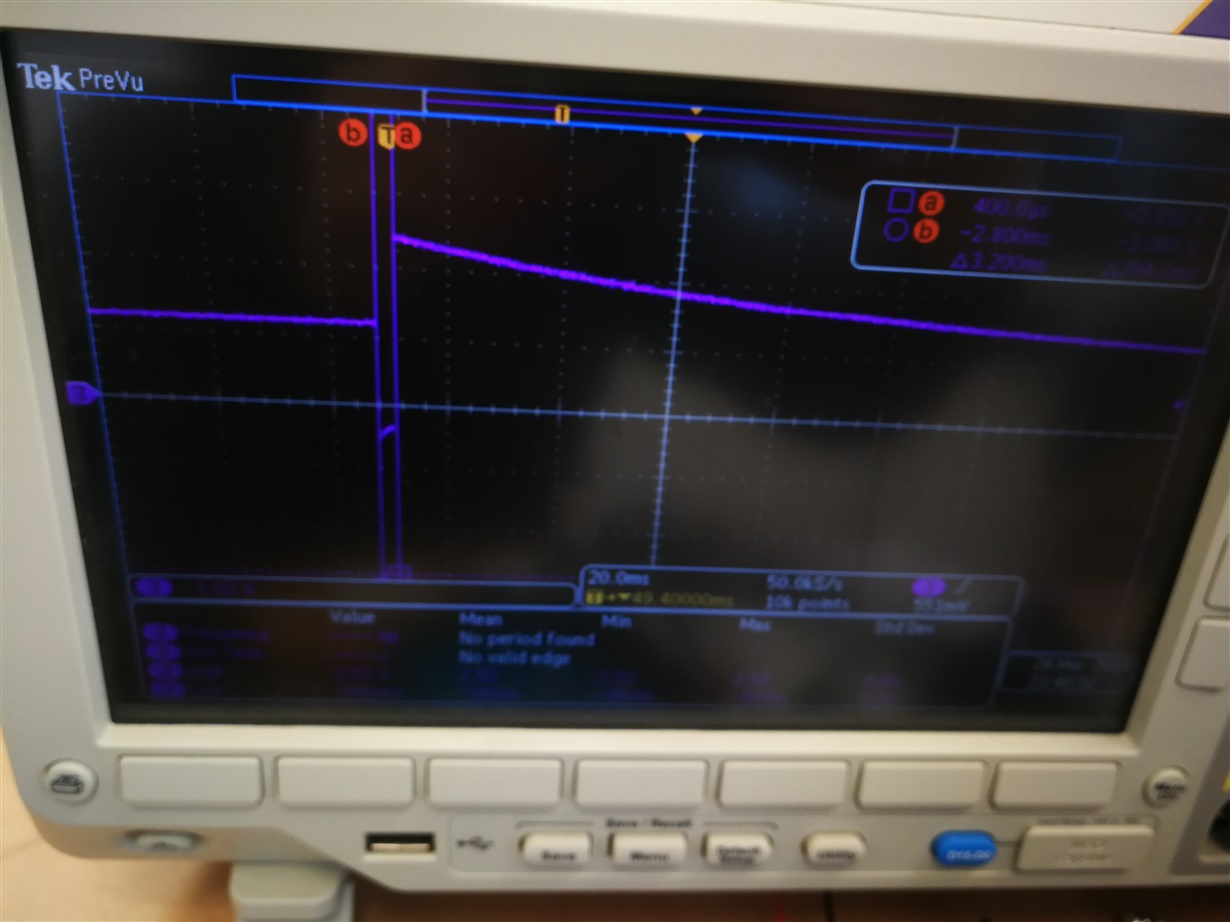Hello
We are using TS3A226E in our design for detecting MIC and GND, and we supply the audio jack with bias voltage of 2V using a codec.
For some reason the press of buttons on the earphones is audible in the earphones (we hear clicks) and when we test with a scope we see that instead of the MIC line connecting to GND, we can see a square waveform (like CLK) as long as a button is pressed.
Also when we short the SLEEVE and RING2 inputs of the TS3A226E we also see the square wave.
Is that a normal response? Is it possible to use TS3A226E with earphones that have buttons? We know it does not have press detection, but we plan on doing the detection with a processor.
Thank you
Ortal



